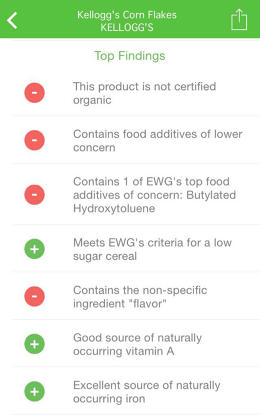App Lets You Peek Inside 80,000 Foods At Your Grocery Store
Looking beyond a nutrition label, Food Scores rates your grub based upon its pesticides, antibiotics, and processing.
Editor: Suzanne LaBarre
Kellogg’s Corn Flakes. The package contains just a few ingredients. Milled corn. Sugar. Malt flavor. Salt. And BHT “for freshness.” Seems innocuous enough. But is it? Entering the product into Food Scores, a new iPhone and web app by the nonprofit Environmental Working Group (EWG), only rates Kellogg’s Corn Flakes as a 5 on a scale of 10 (10 being the worst). I see this in a dashboard of meters that break down food into three parts: nutrition (the standard calories, fat, and protein stuff); ingredients (including undisclosed pesticides, contaminants, or antibiotics); and processing (how far has that product come from its source whole foods). Food Scores has some concerns about those Corn Flakes.


On the mobile version, you can photograph a bar code to look up a product, but the interface limits you from digging too deep. The desktop app explained to me why Butylated Hydroxytoluene was a potentially problematic ingredient in those Corn Flakes. I could click in to see a list of abstracts that explained why I might not want to consume the stuff. The mobile app just provided me with a vague warning about the ingredient. The mobile version could add an extra layer of information easily without cluttering the interface at all. I’d also like to see Food Scores suggest alternative products. Its database has a dozen permutations of “corn flakes” from various manufacturers, so why shouldn’t it show me Arrowhead Mills, its top-ranking corn flake, to steer me in a more informed direction? Having said all that, even for the studied label reader, Food Scores will probably teach you something.
(232)














